President William Lai’s (賴清德) National Day address was the source of far more activity and response than the speech itself warranted. The reactions to the speech and subsequent events by the local press, the international press and the Chinese Communist Party’s (CCP) mouthpieces were all very different.
Michael Turton’s excellent piece, “Lai lays out the future” in the Oct. 14 edition of this paper, provided some much-needed context and a critical examination of some crucial domestic issues Lai failed to address, adding the glorious comment: “the world parses Lai’s speech like Roman priests inspecting the guts of a sacrificial animal for ‘provocations’ and suchlike.”
DUTIFUL ROMAN PRIESTS
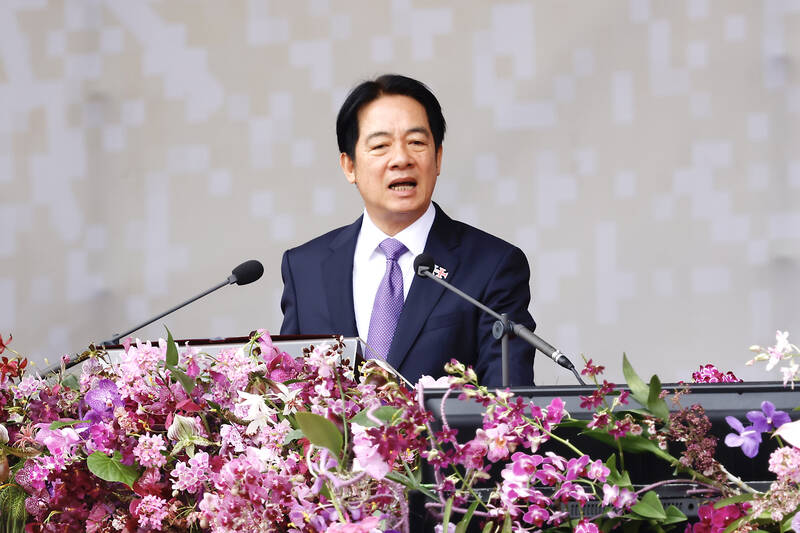
Photo: EPA-EFE
Like all the other Roman priests I dutifully counted the number of mentions of “Republic of China (ROC)” and “Taiwan.” I counted 11 uses of “ROC,” 26 of “Taiwan” and two of “Taiwan” used in English phrases. Sharp-eyed viewers will note my count of 26 “Taiwans” differs from the 45 local media reported, because I only counted it when being used as the name of the country and not as an adjective.
The 11 mentions of “ROC” were higher than former president Tsai Ing-wen (蔡英文) had used. Lai appeared to be trying to be more accommodating to the CCP and opposition Chinese Nationalist Party (KMT), and unlike Tsai even mentioning the existence of the ROC prior to their moving of the capital to Taipei.
Tsai had been carefully crafting a “Republic of China, Taiwan” narrative and identity that subtly blurred the lines between the ROC and Taiwan and essentially merging their histories into one following the arrival of the KMT. Lai, lacking the subtlety and carefully crafted diplomatic skills of Tsai, put together a speech that fell far short of her high standards, though it was still better than most politicians could have mustered.
There is much more analysis on the implications of the speech, but rather than replicate it here, I strongly recommend reading Turton’s aforementioned piece, Nathan Batto’s (鮑彤) “Lai’s national day address” on his Frozen Garlic blog and Yeh Chieh-ting’s (葉介庭) thoughtful analysis and context on the speech and other recent comments, “Is Taiwan the motherland of China?” on Ketagalan Media and Taiwan News.
Local analysts generally thought Lai’s speech was surprisingly conciliatory and was clearly aimed at assuaging concerns of him being more of a “radical secessionist” than Tsai. This strategy might have had some effect on calming American nerves, and was possibly worth a try with the KMT considering the fractured legislature, but the effort was wasted on the CCP.
“NEW” OBSESSION
Hints of some new obsessions emanating out of Beijing to try and change the narrative around Lai and Taiwan had appeared in CCP media outlets even prior to the Double Ten Day speech. For example, in response to Lai’s quipping that since the ROC is older than the People’s Republic of China (PRC), the PRC can not be the “motherland” of Taiwanese, the Global Times quoted Zhu Fenglian (朱鳳蓮), a spokesperson for the Taiwan Affairs Office, as saying on Oct. 8: “Lai is attempting to highlight the political differences across the Taiwan Straits [sic], deliberately severing the historical connections between the mainland and the island, and peddle the new “two-state” rhetoric by constantly hyping that the two sides are “not subordinate” to each other, which exposes his stubborn “Taiwan independence” stance and the malicious intent to escalate hostility and confrontation”
This emphasis on Lai’s supposed “new two-state rhetoric” is curious as the “two-state” concept has been around since the 1990s and was apparently crafted by Tsai when she was in the Lee Tung-hui (李登輝) administration. Nothing Lai has been saying is new, and if anything is milder than what Tsai has been saying for years. Well, aside from a couple of recent quips like the “motherland” one and suggesting Beijing should concentrate on taking back the much larger tracts of land the Qing Dynasty ceded to Russia, that is new.
There are strong indications that Lai has been trying to open the door to better relations with the Chinese side. The CCP clearly has other plans.
POISON PILL WRAPPED IN CELLOPHANE
That the CCP had already planned to escalate their bullying became apparent by the end of the day, the language echoing their “new two-state” line of attack. In spite of all the experts coming to the conclusion that Lai’s speech was quite mild compared to Tsai’s speeches, it was clear the CCP was going to use it as the pretext for further escalation of their threatening behavior.
The language used by the CCP was overheated and outraged in spite of there being no pretext for it. The Global Times ran headlines like “Stubbornness and obstinacy lead to destruction: ‘Taiwan independence’ schemes and provocations are doomed to fail,” while even the usually tamer Xinhua ran headlines like “Experts warn Lai’s separatist speech deceitful, dangerous.”
Probably the most amusingly titled piece, “Taiwan regional leader Lai’s ‘Double Ten’ speech ‘a poison pill wrapped in cellophane,’” stayed up on the front page of the People’s Daily Web site for about a week, an unusually long time. Apparently it did not occur to the People’s Daily that if a poison pill is wrapped in cellophane, it is safe.
After nearly four days of this it became clear it was all a leadup to their live-fire Joint Sword 2024-B military exercises. The exercises similarly used Lai’s also fairly restrained inauguration speech as an excuse. The “A” and “B” are dead giveaways they had planned these for some time.
All the bombast and fury over both mild speeches was primarily for their domestic audience. It provided an excuse for unilaterally upping tensions for the regular person, while throwing red meat to the nationalist base.
They were also trying to reach some foreign audiences, including Taiwanese and the international media. Most Taiwanese saw right through it, but former president Ma Ying-jeou (馬英九) of the KMT copied the CCP’s “new two-state rhetoric” language verbatim to justify why he decided to skip the Double Ten ceremony.
AN ANACONDA THROTTLES ITS PREY INTENTIONALLY
Disturbingly, some in the international media bought into the CCP’s narrative. True, unlike in the past when it was almost uniformly awful, there are some reporters in Taiwan who now know better and do not view everything with Zhongnanhai-colored glasses.
While there has been improvement, a fair amount of international news coverage was not good. Lai’s speech was described using terms such as “provocative,” when it manifestly was not.
Similarly, several outlets ran the illogical and manifestly mistaken line that Nancy Pelosi caused all these military drills around Taiwan because she had the temerity to visit, in spite of her not being the first. There is no way those enormously complex drills, the huge logistics and the lists of thousands of products to be hit with reprisals could have possibly been prepared in the short lead time Pelosi gave in advance of her visit.
They were ready to pull the trigger on the exercises long in advance, the Pelosi visit was just an excuse. If it was not her trip, it would have been some other “provocation” they would have concocted that some in the international press would dutifully lap up as to “why” the poor, beset upon CCP had to “react” to Taiwan.
It appears to be hard for many in the international press to grasp the concept that when the CCP decides to further upset the status quo and increase tensions and risks in the Taiwan Strait, there is no “why” related to anything the Taiwan side has done. They do these things because it is their plan and their agenda to further threaten Taiwan with the ultimate goal of submission.
Recently the term “anaconda strategy” has become popular recently to describe the CCP’s strategy of encircling and slowly choking Taiwan. It is a good analogy.
An anaconda throttles its prey intentionally, not in response to the prey’s “provocations.” The anaconda is unambiguously the aggressor, just as the CCP is towards Taiwan.
Donovan’s Deep Dives is a regular column by Courtney Donovan Smith (石東文) who writes in-depth analysis on everything about Taiwan’s political scene and geopolitics. Donovan is also the central Taiwan correspondent at ICRT FM100 Radio News, co-publisher of Compass Magazine, co-founder Taiwan Report (report.tw) and former chair of the Taichung American Chamber of Commerce. Follow him on X: @donovan_smith.
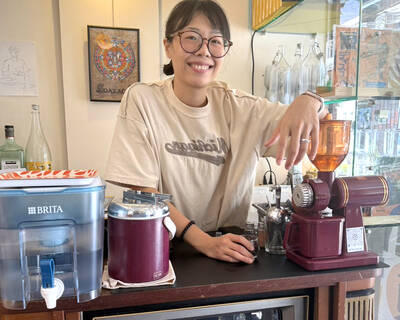
Cheng Ching-hsiang (鄭青祥) turned a small triangle of concrete jammed between two old shops into a cool little bar called 9dimension. In front of the shop, a steampunk-like structure was welded by himself to serve as a booth where he prepares cocktails. “Yancheng used to be just old people,” he says, “but now young people are coming and creating the New Yancheng.” Around the corner, Yu Hsiu-jao (饒毓琇), opened Tiny Cafe. True to its name, it is the size of a cupboard and serves cold-brewed coffee. “Small shops are so special and have personality,” she says, “people come to Yancheng to find such treasures.” She
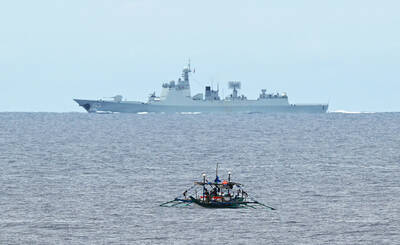
Late last month Philippines Foreign Affairs Secretary Theresa Lazaro told the Philippine Senate that the nation has sufficient funds to evacuate the nearly 170,000 Filipino residents in Taiwan, 84 percent of whom are migrant workers, in the event of war. Agencies have been exploring evacuation scenarios since early this year, she said. She also observed that since the Philippines has only limited ships, the government is consulting security agencies for alternatives. Filipinos are a distant third in overall migrant worker population. Indonesia has over 248,000 workers, followed by roughly 240,000 Vietnamese. It should be noted that there are another 170,000
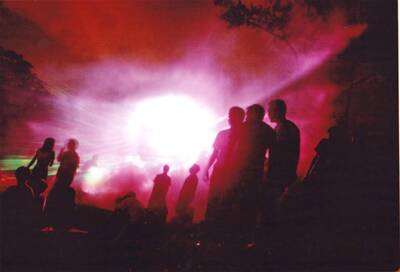
In July of 1995, a group of local DJs began posting an event flyer around Taipei. It was cheaply photocopied and nearly all in English, with a hand-drawn map on the back and, on the front, a big red hand print alongside one prominent line of text, “Finally… THE PARTY.” The map led to a remote floodplain in Taipei County (now New Taipei City) just across the Tamsui River from Taipei. The organizers got permission from no one. They just drove up in a blue Taiwanese pickup truck, set up a generator, two speakers, two turntables and a mixer. They
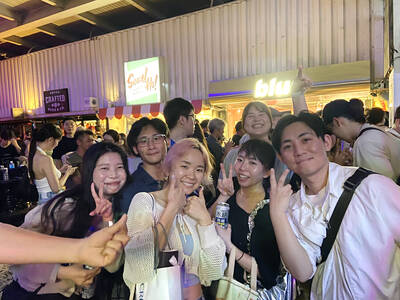
Hannah Liao (廖宸萱) recalls the harassment she experienced on dating apps, an experience that left her frightened and disgusted. “I’ve tried some voice-based dating apps,” the 30-year-old says. “Right away, some guys would say things like, ‘Wanna talk dirty?’ or ‘Wanna suck my d**k?’” she says. Liao’s story is not unique. Ministry of Health and Welfare statistics show a more than 50 percent rise in sexual assault cases related to online encounters over the past five years. In 2023 alone, women comprised 7,698 of the 9,413 reported victims. Faced with a dating landscape that can feel more predatory than promising, many in